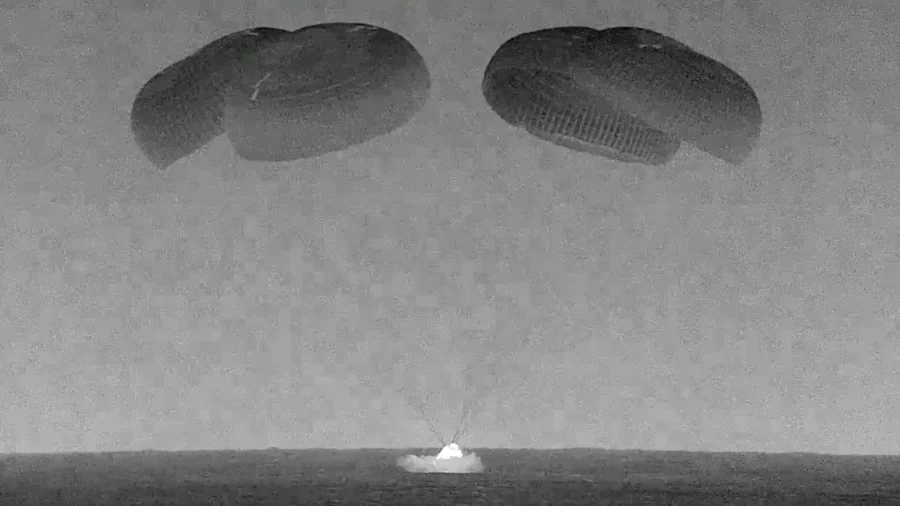The history-making crew of SpaceX’s Polaris Dawn has landed safely back on Earth.
Completing a successful five-day mission and reaching the furthest orbit since Apollo 17’s moon flight in 1972, the four-member crew splashed down early Sunday morning off the Florida Coast, as planned.
The Crew Dragon capsule landed in the Gulf of Mexico off Dry Tortugas, Florida, at 3:37 a.m. EDT.
All four of the spacecraft’s main parachutes deployed successfully for the landing.
The Polaris Dawn team made their mark by traveling the farthest distance from Earth in five decades to an altitude of 874 miles. Billionaire Jared Isaacman, accompanied by SpaceX engineer Sarah Gillis, 30, also made history by completing the first commercial spacewalk early Sept. 12.
Both were tethered to the Dragon and exited the capsule for roughly 10 minutes each to conduct various maneuverability tests for SpaceX’s new spacesuits.
Bill Nelson, administrator of NASA, said in a statement that the spacewalk “represents a giant leap forward for the commercial space industry.”
Isaacman, CEO of the finance company Shift4 Payments, paid for the trip. He was joined by Gillis, medic Anna Menon of SpaceX, and Isaacman’s close friend and pilot Scott Poteet, who was formerly a pilot with the Air Force.
SpaceX said the crew also completed other research during their five days in orbit, including the use of ultrasound to monitor venous gas emboli, which are tiny gas bubbles that can form in blood vessels while in space; the risk of kidney stone formation in microgravity; and validating CPR (cardiopulmonary resuscitation) procedures aboard the Dragon.
The crew also continued tests of Starlink’s laser technology for the internet in orbit. They were able to hold a 40+ minute, uninterrupted video call with the SpaceX team on Earth.
The Dragon spacecraft, which was launched using a Falcon 9 rocket from the Kennedy Space Center in Florida on Sept. 10, had to reenter Earth’s atmosphere, in what is called a “deorbit burn.”
The fiery reentry could be seen from Earth, in which the Dragon looked like a comet.
Crew Dragon, the only U.S. vehicle capable of reliably putting humans in orbit and returning them to Earth, since 2021 has flown more than a dozen astronaut missions, mainly for NASA. The agency seeded the development of the capsule under a program meant to establish commercial, privately built U.S. vehicles capable of ferrying U.S. astronauts to and from the International Space Station.
The Polaris Dawn mission was delayed several times before liftoff on Sept. 14 due to unfavorable weather conditions.
The crew spent 2 1/2 years training with SpaceX mission simulations and hands-on learning for the voyage that included challenging and uncomfortable environments.
Zachary Stieber and reuters contributed to this report.
From The Epoch Times

